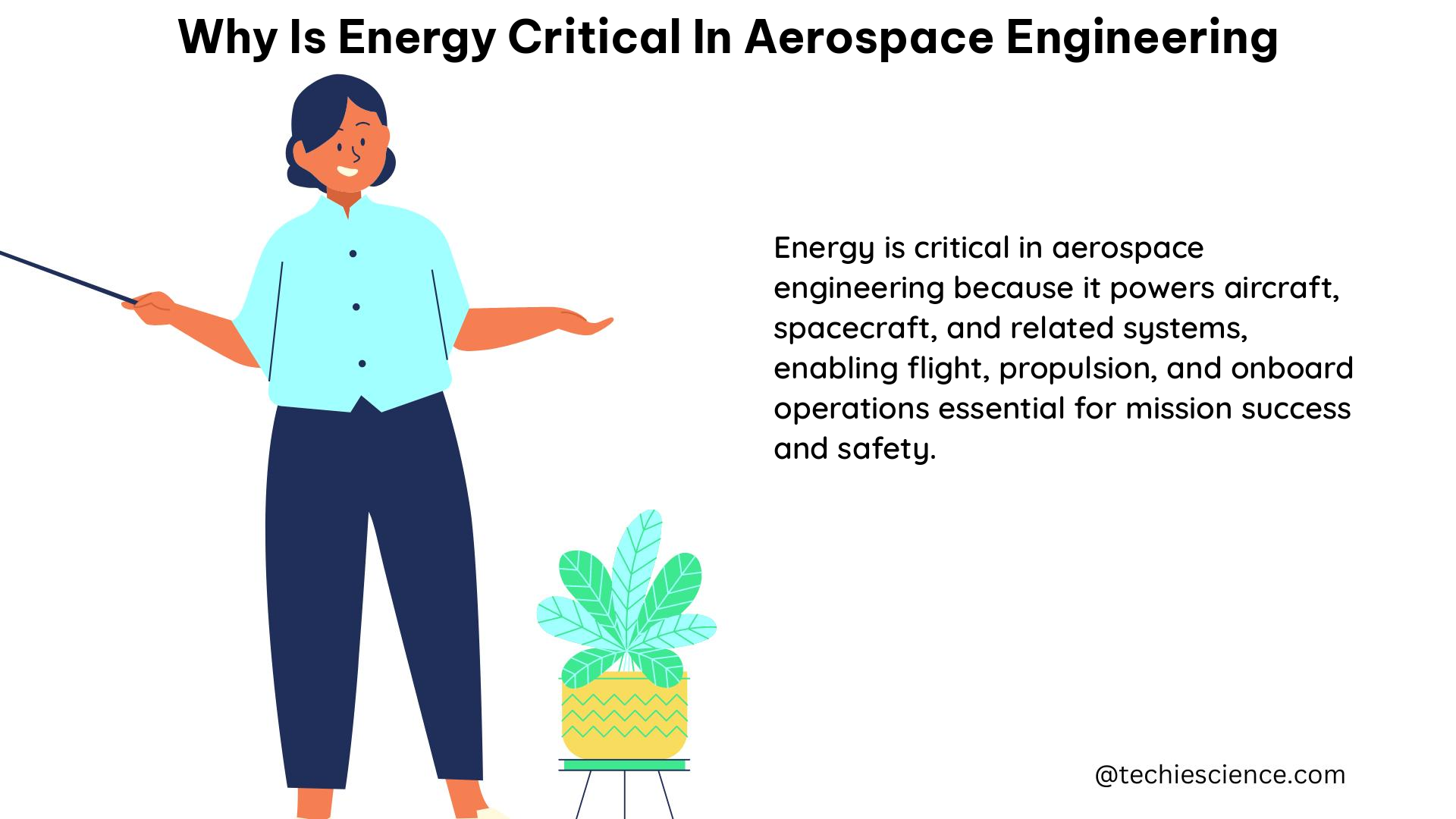The aerospace industry is a significant contributor to global emissions, with commercial aviation generating around 2.5% of the world’s carbon emissions and 12% of transport emissions. Transitioning to a low-carbon future requires the industry to decarbonize urgently, as its business models, revenues, and costs will otherwise be at risk, impacting not just aircraft manufacturers but also the entire supply chain. Energy efficiency and sustainable energy solutions are critical in aerospace engineering to minimize costs, reduce environmental impact, and ensure the industry’s long-term viability.
The Importance of Energy Efficiency in Aerospace Manufacturing
Improving energy efficiency in the manufacturing of aircraft and aerospace components is crucial for minimizing costs and environmental impact. By reducing energy use and related emissions, aerospace manufacturers can save money, protect the planet, and improve the bottom line.
Reducing Energy Consumption and Emissions
Aerospace manufacturers can implement various strategies to reduce energy consumption and emissions in their operations:
- Expanding Conservation Efforts: Implementing energy-efficient practices, such as optimizing lighting, HVAC systems, and manufacturing processes, can significantly reduce energy use.
- Increasing Renewable Energy Use: Transitioning to renewable energy sources, such as solar, wind, or geothermal power, can help reduce the industry’s carbon footprint.
- Implementing Third-Party-Verified Offsets: Offsetting the remaining greenhouse gas (GHG) emissions through verified carbon offset programs can help achieve net-zero emissions.
- Reducing Emissions: Implementing targeted measures to reduce emissions, such as improving logistics, optimizing transportation, and adopting more sustainable materials and processes, can further minimize the industry’s environmental impact.
For example, Boeing has achieved net-zero GHG emissions at its manufacturing and work sites by expanding conservation and renewable energy use, implementing third-party-verified offsets, and reducing emissions by 25% from 2017 levels.
Improving Energy Efficiency through Machine Learning
Machine learning techniques are increasingly being applied to improve aircraft performance and reduce energy consumption. These advanced analytical methods can help optimize various aspects of aerospace engineering, leading to enhanced energy efficiency.
- Predictive Hybrid Reduced Order Models: Combining proper orthogonal decomposition with deep learning architectures can create predictive models that enhance aerodynamics and reduce fuel consumption.
- Data-Driven Modal Decomposition: Optimizing turbulent channel flow over an anisotropic porous wall using data-driven models based on modal decomposition can lead to improved energy efficiency.
- Multidisciplinary Design Optimization: Integrating machine learning techniques with multidisciplinary design optimization can help identify the most energy-efficient aircraft configurations and operational strategies.
These machine learning-based approaches can provide valuable insights and enable more informed decision-making in the design, manufacturing, and operation of aerospace systems, ultimately contributing to improved energy efficiency and reduced environmental impact.
The Impact of Regulations and Sustainability Initiatives

The aerospace industry’s significant contribution to global emissions has led to increased regulatory pressure and sustainability initiatives, which further highlight the criticality of energy in this sector.
Regulatory Measures and their Implications
Governments and international organizations are implementing various regulations to address the industry’s environmental impact. These measures include:
- Carbon Emissions Pricing: The introduction of carbon pricing schemes, such as the European Union Emissions Trading System (EU ETS), can significantly impact the industry’s costs and profitability.
- Reducing Short Flights: Policies aimed at reducing short-haul flights and promoting the use of more sustainable alternate modes of transportation, such as high-speed rail, can disrupt the industry’s business models.
- Promoting Sustainable Aviation Fuels: Regulations and incentives to increase the adoption of sustainable aviation fuels (SAFs) can drive the industry’s transition towards more environmentally friendly energy sources.
According to Deloitte, the commercial aerospace industry could experience a revenue decline of about US$40 billion and a workforce reduction of 110,000 jobs if these regulatory measures are implemented.
Sustainability Initiatives and Industry Commitments
In response to the growing environmental concerns, the aerospace industry has also taken various sustainability initiatives:
- Emissions Reduction Targets: Many leading aerospace companies have set ambitious emissions reduction targets, such as achieving net-zero greenhouse gas emissions by a specific year.
- Sustainable Aviation Fuel Adoption: The industry is actively working to increase the production and use of sustainable aviation fuels, which can significantly reduce the carbon footprint of air travel.
- Circular Economy Principles: Aerospace manufacturers are exploring ways to implement circular economy principles, such as designing for reuse, repair, and recycling, to minimize waste and improve resource efficiency.
These sustainability initiatives demonstrate the industry’s commitment to addressing the energy and environmental challenges it faces, underscoring the critical role of energy in aerospace engineering.
Conclusion
In summary, energy is critical in aerospace engineering due to the industry’s significant contribution to global emissions, the potential revenue and job losses due to regulatory measures, and the opportunities for improvement through energy efficiency measures and machine learning techniques. Aerospace manufacturers must prioritize energy efficiency, sustainable energy solutions, and innovative technologies to ensure the long-term viability and environmental sustainability of the industry.
References:
- 2023 Sustainability Report – The Boeing Company. (2023). Retrieved from https://www.boeing.com/content/dam/boeing/boeingdotcom/principles/sustainability/sustainability-report/2023/assets/2023-Boeing-Sustainability-Report.pdf
- Le Clainche, S. F., Ferrer, E. G., Gibson, S. C., Parente, A., & Vinuesa, R. (2023). Improving aircraft performance using machine learning: A review. Science Direct. Retrieved from https://www.sciencedirect.com/science/article/pii/S1270963823002511
- Decarbonizing aerospace | Deloitte Insights. (2021). Retrieved from https://www2.deloitte.com/us/en/insights/industry/aerospace-defense/decarbonizing-aerospace.html
- Energy Efficiency for Sustainable Aerospace Manufacturing – Wattnow. (2023). Retrieved from https://wattnow.io/2023/03/29/energy-efficiency-for-sustainable-aerospace-manufacturing/

The lambdageeks.com Core SME Team is a group of experienced subject matter experts from diverse scientific and technical fields including Physics, Chemistry, Technology,Electronics & Electrical Engineering, Automotive, Mechanical Engineering. Our team collaborates to create high-quality, well-researched articles on a wide range of science and technology topics for the lambdageeks.com website.
All Our Senior SME are having more than 7 Years of experience in the respective fields . They are either Working Industry Professionals or assocaited With different Universities. Refer Our Authors Page to get to know About our Core SMEs.